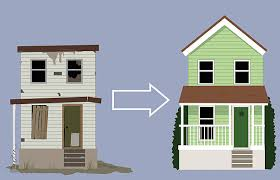Now Reading: House Flipping in 2025: Boom or Bust for Investors?
-
01
House Flipping in 2025: Boom or Bust for Investors?
House Flipping in 2025: Boom or Bust for Investors?

Over the past decade, house flipping has become a popular way to make money in real estate. With TV shows glamorizing the process, many have been inspired to buy, renovate, and sell homes for profit. But as the market shifts and interest rates fluctuate, a big question looms: Is house flipping still worth it in 2025?
Let’s explore what’s happening in the housing market this year, the challenges flippers face, and what experts say about the future of flipping homes.
A Quick Look Back: The Rise of House Flipping

House flipping became especially popular after the 2008 housing crash. Investors could buy foreclosed homes at rock-bottom prices, renovate them, and sell them for a profit. For many years, this strategy worked well, especially in cities where housing demand remained strong.
Between 2015 and 2021, low interest rates and rising home values made flipping even more profitable. In 2022 and 2023, however, the market began to cool. Inflation, higher mortgage rates, and increased renovation costs started to squeeze profits.
So, what does 2025 look like?
What the 2025 Market Looks Like for Flippers

The current real estate market in 2025 is more complex. Here are the key trends impacting house flippers:
1. High Interest Rates Remain a Challenge
While mortgage rates have dropped slightly compared to their 2023 peak, they’re still higher than during the flipping boom of the late 2010s. Most flippers use short-term financing or hard money loans to purchase properties. With higher borrowing costs, profits shrink.
2. Home Prices Are Stabilizing
In many regions, home prices have leveled off. This means flippers can no longer count on big price jumps to boost profits. In some markets, prices are even slightly declining, making it harder to sell renovated homes at a high price.
3. Construction and Labor Costs Stay High
Flipping a house isn’t just about buying low and selling high—it also requires fixing the home. In 2025, renovation costs remain elevated due to continued labor shortages and higher material prices. Flippers have to budget carefully to avoid losing money.
4. Tighter Regulations
More cities are regulating short-term real estate projects, including flips. Permit delays, zoning changes, and new building codes can all slow down a flip and increase expenses.
Still Some Bright Spots for Flippers

Despite these challenges, house flipping isn’t dead—far from it. Many experienced investors are still finding success. Here’s how:
1. Focusing on Undervalued Markets
Smart flippers are targeting smaller cities or suburban areas where home prices are more affordable. These markets often have less competition and more opportunities for bargains.
2. Adding Value with Smart Renovations
Instead of full gut-renovations, many flippers now focus on cosmetic updates like new paint, fixtures, or landscaping. These changes cost less but still attract buyers.
3. Using Creative Financing
Some investors are teaming up with partners or using alternative financing options like seller financing to reduce upfront costs and avoid high-interest loans.
Expert Opinions: What Real Estate Pros Are Saying
To get a clearer picture, we asked a few real estate experts whether flipping is still worth it in 2025.
“Flipping can still be profitable, but it’s not for beginners anymore,” says Elena Ramos, a real estate investor in Phoenix. “You need to know your market, plan every dollar, and expect the unexpected.”
Mark Taylor, a broker in Ohio, agrees. “The quick-money flipping days are mostly over. You need a solid strategy now. If you just follow the TV shows, you’ll get burned.”
Both experts agree that the biggest key to success in 2025 is doing your homework and being realistic about costs and timelines.
Red Flags and Risk Factors in 2025
For those thinking about getting into flipping this year, here are some warning signs to watch for:
- Overpaying for a property – In a competitive market, it’s easy to pay too much, leaving little room for profit.
- Underestimating renovation costs – Surprise expenses can wipe out your earnings.
- Market timing mistakes – If the local market cools before you finish the project, your home may sit unsold.
- Legal and permit delays – These can add months to your timeline and increase holding costs.
Tips for Flipping Success in Today’s Market
If you’re planning to flip a house in 2025, here are a few smart tips:
- Do a detailed budget before buying – Know your numbers and add a cushion for unexpected costs.
- Choose the right location – A good neighborhood sells a house faster than fancy finishes.
- Keep renovations simple and clean – Focus on updates that increase value without breaking the bank.
- Build a reliable team – A trusted contractor, agent, and lender can save you time and money.
- Plan your exit strategy – Whether it’s selling or renting, know your end goal before you begin.
Conclusion: Still Worth It—But Not for Everyone
So, is house flipping still worth it in 2025?
Yes—but only if you’re prepared.
The market today is no longer a flipper’s free-for-all. It takes more planning, more skill, and a sharper eye for deals. Those who treat it like a serious business rather than a hobby are still making money. But for beginners with dreams of fast cash, 2025 may be the year to learn first before jumping in.
With the right approach, house flipping in 2025 can still deliver solid returns—but it’s a tougher game now, and not everyone will win.
Read More:- Shobha Realty Launches Its Most Luxurious Project Yet—Full Details Inside 2025





















